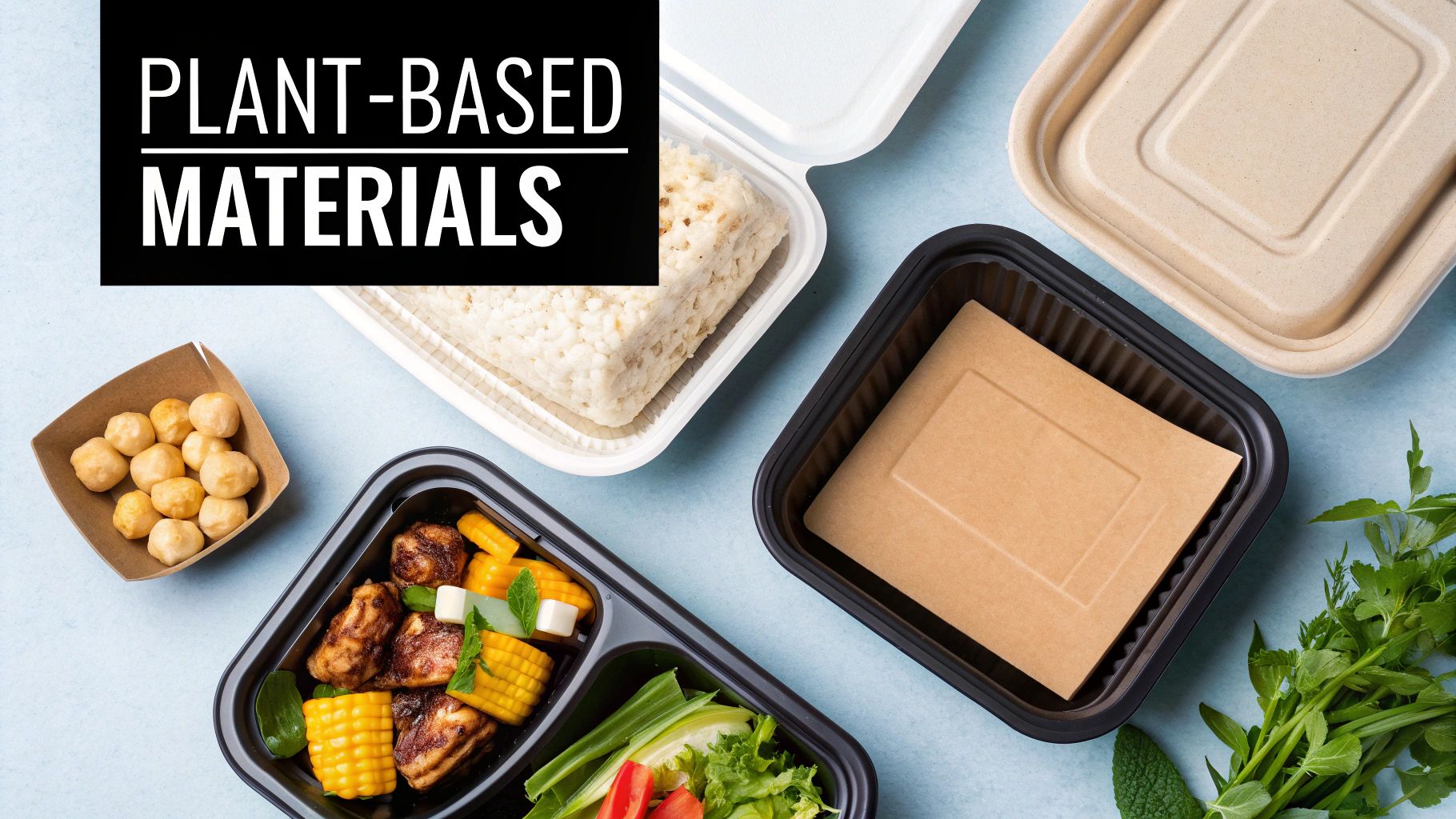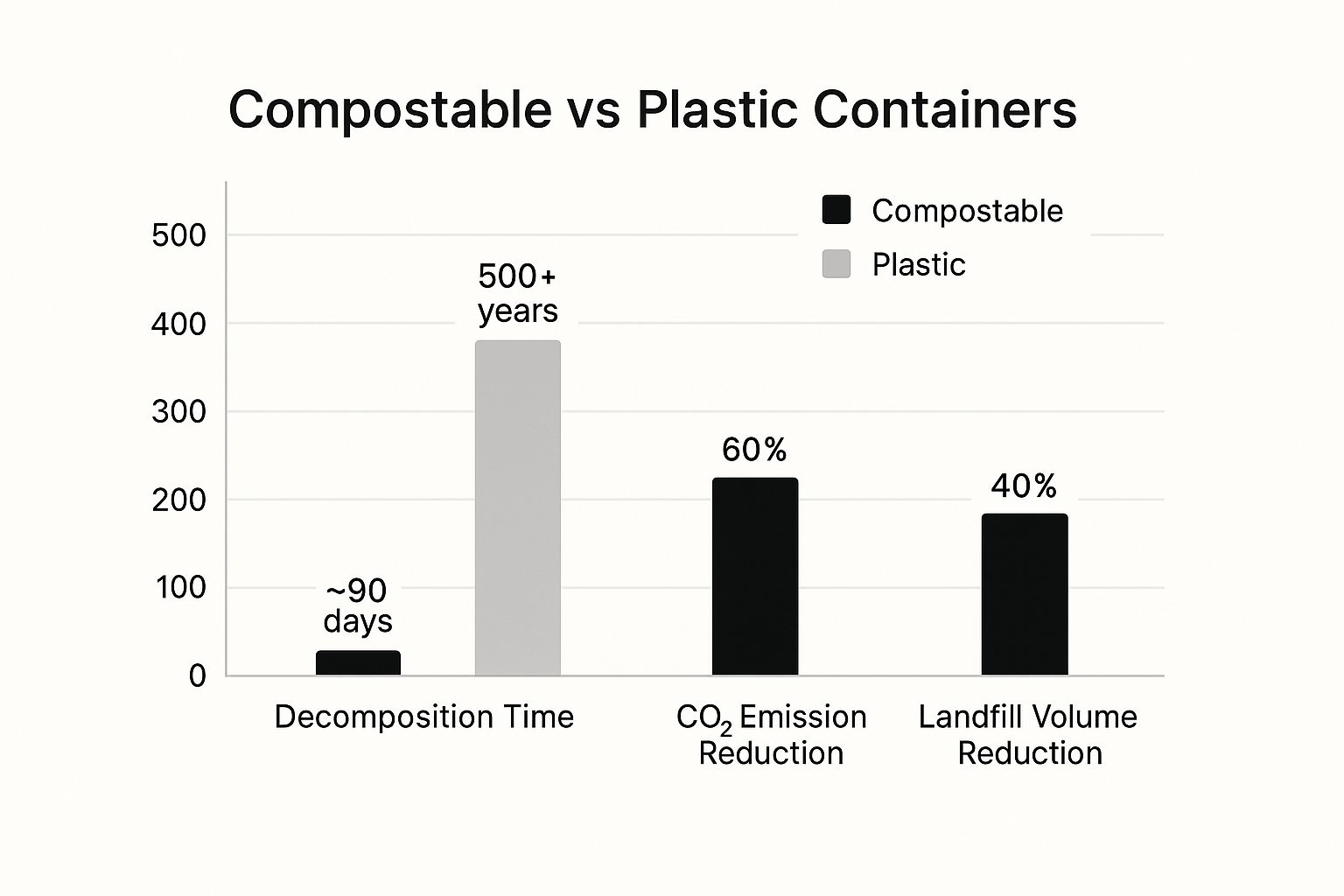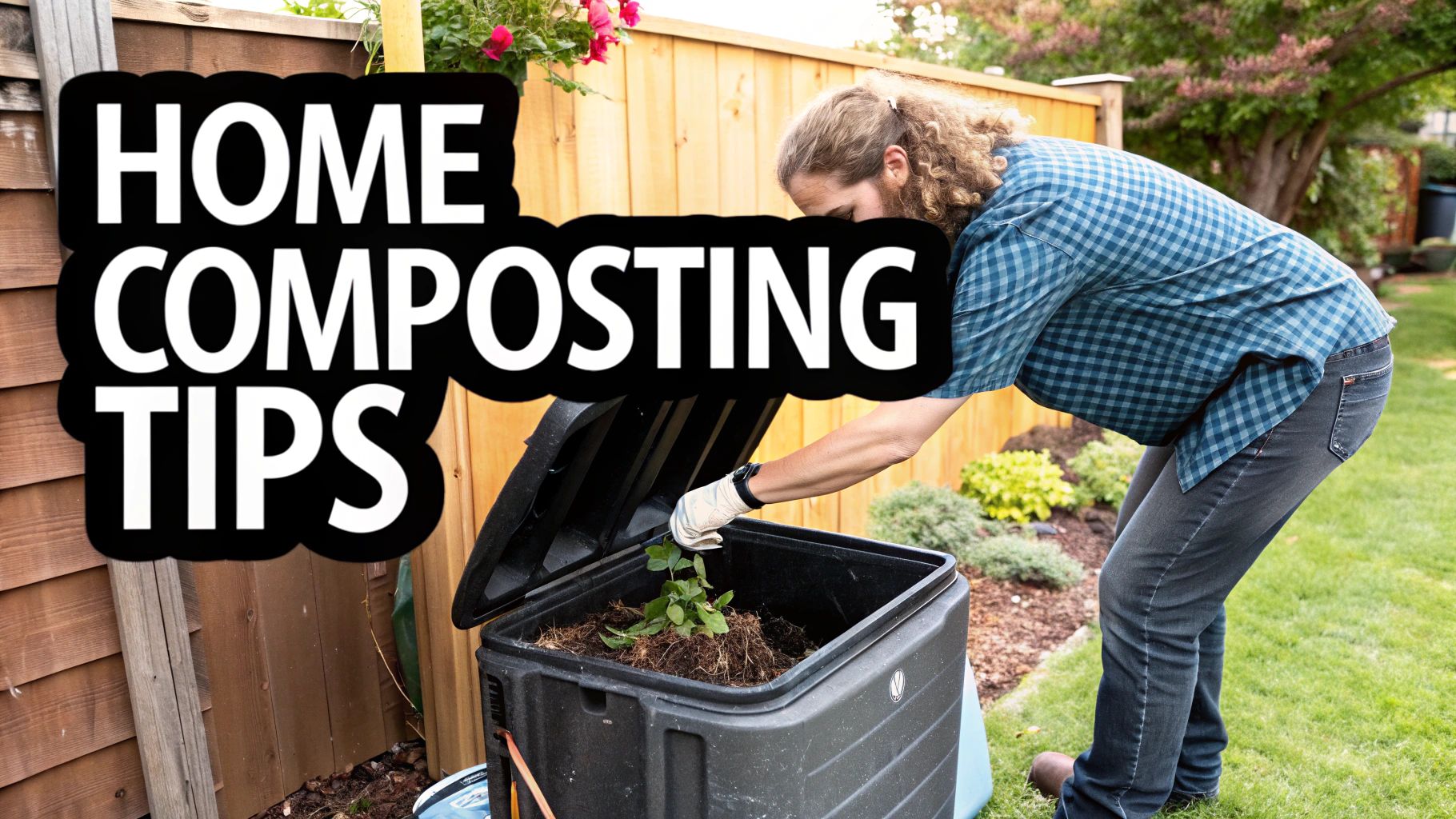The Real Story Behind Compostable Food Containers
Compostable food containers are gaining popularity. But what does “compostable” really mean? It’s important to understand the difference between biodegradable and compostable. While compostable materials are biodegradable, the reverse isn’t always true. Biodegradable materials simply break down over time. Compostable materials break down into organic matter that enriches soil in a specific composting environment. This difference is key for businesses and consumers looking for sustainable choices.
Certifications and Standards for Compostable Food Containers
How can you identify a truly compostable container? Look for certifications. Organizations like the Biodegradable Products Institute (BPI) offer rigorous testing and certification. BPI created the ASTM D6400 standard. The European EN 13432 standard also exists. These certifications guarantee that products break down under specific conditions of temperature, humidity, and time, without leaving harmful residues. This helps avoid greenwashing.
Materials Used in Compostable Food Containers
Several materials are used to make compostable containers, each with its own pros and cons. PLA (polylactic acid), derived from cornstarch, is a popular option. Its versatility allows it to be molded into various shapes. Bagasse, a byproduct of sugarcane processing, provides excellent heat resistance, making it suitable for hot foods. Bamboo and wheat straw are also gaining traction due to their rapid renewability. Molded fiber, often from recycled paper, offers a sturdy, cost-effective alternative. The ideal material depends on factors like the type of food, temperature needs, and desired look.
This growing demand for eco-friendly options is driving market growth. The compostable packaging market is expected to reach USD 137.26 billion by 2029, with a CAGR of approximately 8.1%. This growth is driven by stricter regulations on plastic, consumer demand for sustainable choices, and advancements in compostable materials.
Decomposition Timeframes for Compostable Food Containers
A common misconception is that compostable containers break down quickly anywhere. However, decomposition time depends on the material and the composting environment. Some materials, like PLA, can decompose in a commercial composting facility within 90 days. In a home compost bin, decomposition may take much longer. They may not break down at all in a landfill. Understanding these differences is crucial for educating consumers and ensuring proper composting.
Why Compostable Food Containers Are Taking Over Now
The increasing popularity of compostable food containers isn’t a fad. It’s a direct result of several powerful factors coming together. A major driver is the rising consumer demand for sustainable choices.
More and more people are recognizing the environmental impact of conventional packaging. They’re actively looking for better options, pushing businesses to change their practices.
The Power of Consumer Demand and Corporate Responsibility
Corporate commitments to sustainability are also playing a key role. Many companies are setting ambitious environmental goals.
These often include switching to eco-friendly packaging solutions like compostable containers. This isn’t simply about positive public relations. Companies are realizing the long-term advantages of sustainable practices, including potential cost savings.
Regulatory Landscape and Regional Differences
Government regulations are further accelerating the shift towards compostable containers. Around the world, stricter rules on single-use plastics are encouraging businesses to seek alternatives.
Regional differences in adoption are becoming apparent. Europe has been at the forefront, with many countries banning certain plastic packaging types. North America is following suit, with increasing regulations at the state and local levels. The Asia-Pacific region shows more varied adoption rates, depending on the country. Forward-thinking brands are strategically adapting to these regional variations to gain a competitive advantage.
Material Innovations and Cost-Effectiveness
Material innovations are also making compostable containers a more practical choice. New materials and manufacturing methods are enhancing their performance.
These advancements are addressing past issues like heat resistance, moisture barriers, and durability. This allows compostable containers to be used for a wider array of foods.
Importantly, these innovations are also lowering costs. The eco-friendly food packaging market, encompassing compostable containers, is expected to reach nearly USD 392.37 billion by 2034, increasing from about USD 211.66 billion in 2025. This growth is driven by consumer preferences, government regulations, and corporate initiatives. The availability of cost-effective compostable options makes the change attractive to businesses of all sizes, which is essential for widespread adoption. The future of food packaging is clearly heading towards sustainability, with compostable containers leading the way.
Compostable Vs. Traditional: What You Need To Know
Beyond the eco-friendly talk, how do compostable food containers really stack up against traditional options for your food business? It’s not just about sustainability; it’s about practical performance. This section offers a real-world comparison of vital factors, including heat resistance, moisture barriers, durability, and the impact on your product’s shelf life.
Performance Comparison: Heat, Moisture, and Durability
Can a compostable container really handle hot soup? Will it leak during delivery? These are critical questions for any food service operation. Thankfully, compostable containers have made significant strides. Many options now offer heat resistance and durability comparable to traditional plastic.
However, moisture barriers can still present a challenge. Some compostable materials absorb moisture more readily than their traditional counterparts. This can impact the texture of some foods, particularly during extended storage.
For example, a PLA container might work perfectly for a salad, but be less suitable for a saucy dish. Bagasse, derived from sugarcane, typically holds up well with both hot and wet foods because of its natural resistance. Choosing the right material is key to ensuring your food reaches the customer in excellent condition.
To help illustrate the key differences between compostable and traditional containers, let’s examine a detailed comparison:
Compostable vs. Traditional Food Containers Comparison
| Container Type | Heat Resistance | Moisture Resistance | Average Decomposition Time | Environmental Impact | Typical Cost Range |
|---|---|---|---|---|---|
| PLA (Compostable) | Moderate | Low | 6 months – 2 years (in commercial composting facilities) | Lower carbon footprint than traditional plastic; requires proper composting | $0.15 – $0.30 per container |
| Bagasse (Compostable) | High | Moderate | 3-6 months (in commercial composting facilities) | Lower carbon footprint than traditional plastic; requires proper composting | $0.20 – $0.40 per container |
| Polypropylene (Traditional) | High | High | Hundreds of years | High carbon footprint; contributes to plastic pollution | $0.05 – $0.15 per container |
| Polystyrene Foam (Traditional) | Moderate | High | Hundreds of years | High carbon footprint; contributes to plastic pollution | $0.03 – $0.08 per container |
As the table highlights, compostable options like PLA and Bagasse offer significant environmental advantages, especially regarding decomposition time and overall carbon footprint. However, they are generally more expensive than traditional options and can be less resistant to moisture. Choosing the right container type requires balancing performance needs with environmental and cost considerations.
Environmental Impact and End-of-Life Scenarios
Compostable containers provide clear environmental benefits, but it’s crucial to see the bigger picture. They generally have a lower carbon footprint than traditional plastic and can significantly reduce landfill waste. However, achieving these benefits requires proper composting methods.
If a compostable container ends up in a landfill, it might not decompose properly. This negates some of the expected environmental advantages. Commercial composting facilities provide the optimal decomposition environment, but access to these facilities can vary by location.
The Cost Factor: Short-Term Expense vs. Long-Term Value
Cost is a significant factor for any business. Compostable containers generally have a higher upfront cost compared to traditional options. However, this initial investment can bring substantial long-term benefits.
More and more, consumers are willing to support businesses demonstrating a commitment to sustainability. Using compostable containers can become a valuable marketing tool. It showcases your environmental responsibility, potentially boosting customer loyalty and drawing in new, environmentally conscious customers.
Further, emerging regulations on single-use plastics may make switching to compostable options inevitable shortly. Investing now could give your business a significant advantage.
Implementing Compostable Containers in Your Food Business
Switching to compostable food containers can feel like a big change, but with the right plan, it can be a smooth and positive move for your business. This section offers a practical guide to the process, from finding the right suppliers to educating your customers.
Sourcing and Inventory Management
The first step is finding dependable suppliers of compostable containers. Look for suppliers offering a range of materials and sizes to meet your specific needs. When choosing containers, think about important factors like heat resistance, moisture barriers, and durability.
Inventory management is just as important. Compostable containers often have particular storage needs to prevent them from breaking down. Correct storage keeps your containers in top condition until you need them. It’s also wise to plan for potential supply chain problems. Having backup suppliers or keeping a larger safety stock can protect your business from unexpected delivery delays.
Gradual Transition and Pricing Strategies
A step-by-step approach can make the change to compostable containers easier. Begin by switching over a portion of your takeout orders or certain menu items. This gives both your staff and customers time to adjust.
Pricing is another key factor to consider. Compostable containers generally cost more than traditional packaging. However, there’s a growing global market for compostable foodservice packaging. In 2024, the market was valued at USD 18.91 billion and is expected to reach USD 30.7 billion by 2035, growing at a CAGR of about 4.5%. Chain restaurants are leading the charge with a 35% market share. Many consumers are happy to pay a little extra for environmentally friendly choices, which can help offset the higher costs. Communicate the value of your sustainable packaging to your customers. Emphasize the environmental benefits and your commitment to responsible business practices.
Operational Adjustments and Staff Training
Using compostable containers might require some changes to how you operate. Some materials, for instance, may not be microwave-safe. It’s essential to train your staff on the proper handling and storage of these containers.
Training should also include educating customers on the right way to dispose of the containers. Clear instructions help ensure the containers end up being composted, not thrown in the trash.
Marketing and Customer Communication
Promoting your switch to sustainable packaging can be a great marketing opportunity. It builds customer loyalty and attracts new, environmentally conscious customers. Share your change to compostable containers on social media, in-store signage, and on your menu.
Be upfront about your eco-friendly initiatives and explain why they matter. This transparency reinforces your commitment to sustainability. Highlighting the positive environmental impact of your choices resonates with many customers, improving your brand image and potentially boosting sales.
Turning Customer Confusion Into Environmental Wins
The hard truth is that compostable food containers only benefit the environment when disposed of properly. Many customers simply don’t know what to do with them, leading to these containers ending up in landfills, which negates their environmental purpose. This section addresses the vital challenge of consumer education through practical communication strategies. Understanding customer behavior, such as why some abandon their online orders, can provide valuable insights into implementing new systems like compostable containers.
Clear Communication: The Key to Proper Disposal
Innovative restaurants are finding creative ways to guide customer behavior. Clear and concise labeling directly on the packaging is crucial. Simple icons indicating “compostable” and “not recyclable” can make a significant difference. Strategically placed signage at disposal points and throughout the restaurant also provides helpful clarification.
Digital engagement offers another effective way to educate customers. Restaurants can use their websites and social media platforms like Facebook to explain proper composting practices. Short videos or infographics demonstrating how to identify compostable containers and where to dispose of them can be extremely effective. This proactive communication turns potential customer confusion into positive action.
Home Composting vs. Commercial Composting: A Crucial Distinction
One of the biggest sources of confusion is the difference between home and commercial composting. Not all compostable containers break down at the same rate or under the same conditions. Some are designed for industrial composting facilities, which operate at higher temperatures and process materials more efficiently. These containers may not fully decompose in a home compost bin.
Educating customers about this distinction is vital. Restaurants can explain which containers are suitable for home composting and which require a commercial facility. This empowers customers to make informed choices and helps ensure that compostable containers reach the right destination.
The following infographic highlights the key differences between compostable and traditional plastic containers:
As the infographic shows, compostable containers offer significant environmental benefits. These include drastically reduced decomposition times, a 60% reduction in CO₂ emissions, and a 40% decrease in landfill volume. These advantages underscore the importance of proper disposal and consumer education. To understand these benefits fully, let’s delve into a more detailed breakdown of compostable materials.
The following table provides further guidance on proper disposal based on different compostable materials:
Compostable Container Disposal Guide by Material Type
| Material Type | Home Compostable? | Industrial Compostable Only? | Average Decomposition Time | Special Handling Required | How to Identify |
|---|---|---|---|---|---|
| PLA (Polylactic Acid) | Sometimes | Often | 2-6 months (industrial) | Check local regulations | Often labeled “PLA” |
| Bagasse (Sugarcane Fiber) | Yes | Yes | 45-90 days | None | Often looks and feels like paper |
| Bamboo | Yes | Yes | 6 months – 2 years | May require shredding for home composting | Distinct bamboo appearance |
| PHA (Polyhydroxyalkanoates) | Yes | Yes | Weeks to months | None | Check for “PHA” label |
This table clarifies the varying requirements for different compostable materials, highlighting the importance of understanding the specific type of container used.
Building Community Partnerships for Closed-Loop Systems
Leading food businesses are going beyond customer education by partnering with composting facilities and waste management organizations. These collaborations create closed-loop systems where compostable containers are properly processed and returned to the earth as valuable compost. This reduces reliance on landfills and promotes a circular economy.
Some restaurants partner with local composting facilities to offer collection services for used containers. This simplifies disposal and reinforces the business’s commitment to sustainability. Other businesses collaborate with waste management companies to develop community educational programs, promoting a broader understanding of composting best practices.
These partnerships turn a potential logistical challenge into a significant environmental victory, demonstrating a strong commitment to sustainability and creating a positive impact on the community. By actively engaging with composting facilities and waste management providers, food businesses ensure their investment in compostable packaging truly benefits the environment.
The Future of Compostable Food Containers Is Now
While compostable food containers offer a promising path toward sustainable packaging, they do have some current limitations. However, these challenges are driving exciting innovations, rapidly making compostable options more viable for businesses of all sizes.
Addressing Current Limitations
One key area of ongoing development is moisture resistance. Traditional plastic containers excel at this, but some compostable materials are more permeable. This can affect the texture and shelf life of certain foods.
For example, a saucy dish in a less moisture-resistant compostable container might become soggy faster than in a traditional plastic one. Also, maintaining optimal temperatures for hot or cold food can be challenging with some compostable materials.
Another hurdle is the limited availability of composting infrastructure. Compostable containers need specific conditions to break down properly. Commercial composting facilities offer the ideal environment, but access isn’t universal.
Even if consumers dispose of their compostable containers correctly, they could end up in a landfill without a local composting facility. This highlights the need for consumer education and more robust composting infrastructure.
Cost is another factor. Compostable containers often cost more upfront than traditional options. This can be difficult for businesses with tight margins. However, as demand grows and production technologies improve, the price difference should shrink. The future of compostable containers is linked to wider sustainability efforts, like Environmental Social and Governance (ESG) frameworks.
Breakthrough Innovations Transforming the Landscape
Despite these hurdles, the future of compostable food containers is promising. Materials scientists and packaging engineers are developing new biopolymers with enhanced properties like improved moisture resistance, better temperature tolerance, and greater durability.
Enhanced barrier technologies are another area of rapid innovation. These create thin coatings applied to compostable materials, improving their ability to block moisture and maintain temperature. This helps compostable containers perform more like traditional plastic containers while remaining environmentally friendly.
Smart packaging is also making a difference. Sensors embedded in the containers track temperature, humidity, and other factors, improving quality control and preventing spoilage. These sensors can also offer data about the composting process itself, optimizing efficiency and reducing waste.
Some companies are exploring end-of-life improvements. For instance, containers are designed to break down into valuable soil nutrients even in landfills, ensuring environmental benefits even in areas with limited composting infrastructure.
Forward-thinking businesses are finding ways to overcome infrastructure limitations. Some partner with local municipalities to develop composting programs and expand access to commercial facilities. Others invest in on-site composting systems. These collaborative solutions are essential for a truly circular economy for food packaging.
Ready to explore the future of sustainable packaging? MrTakeOutBags.com offers a wide selection of compostable food containers and other eco-friendly takeout packaging solutions. Visit us today to discover how you can make a positive environmental impact while enhancing your brand image.








Comments are closed.